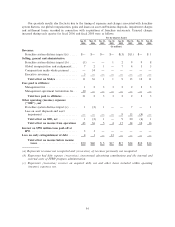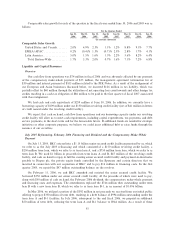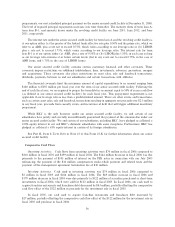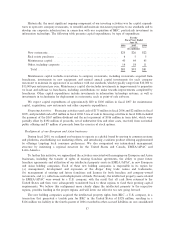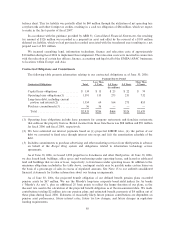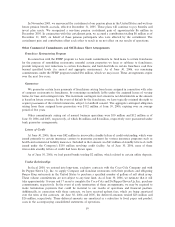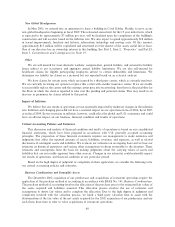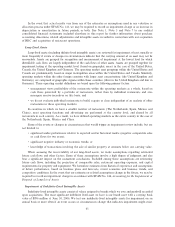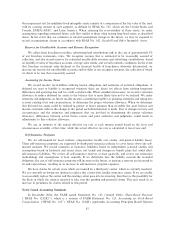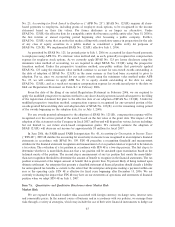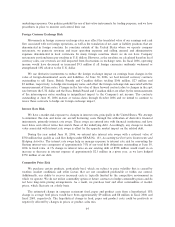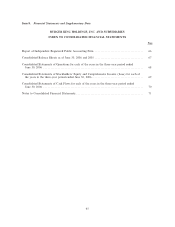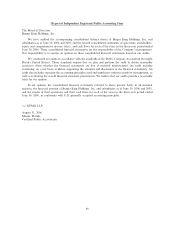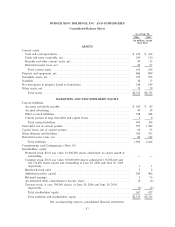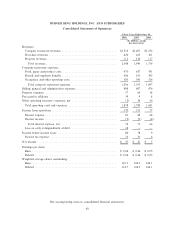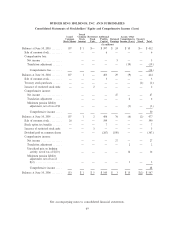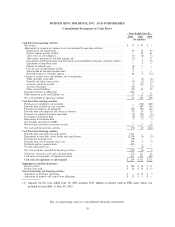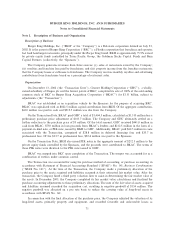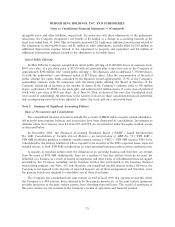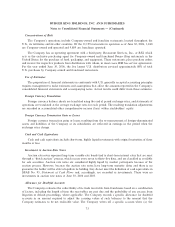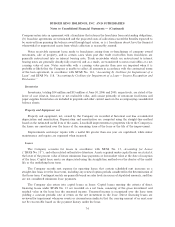Burger King 2006 Annual Report Download - page 76
Download and view the complete annual report
Please find page 76 of the 2006 Burger King annual report below. You can navigate through the pages in the report by either clicking on the pages listed below, or by using the keyword search tool below to find specific information within the annual report.underlying exposures. Our policies prohibit the use of derivative instruments for trading purposes, and we have
procedures in place to monitor and control their use.
Foreign Currency Exchange Risk
Movements in foreign currency exchange rates may affect the translated value of our earnings and cash
flow associated with our foreign operations, as well as the translation of net asset or liability positions that are
denominated in foreign countries. In countries outside of the United States where we operate company
restaurants, we generate revenues and incur operating expenses and selling, general and administrative
expenses denominated in local currencies. In many foreign countries where we do not have Company
restaurants our franchisees pay royalties in U.S. dollars. However, as the royalties are calculated based on local
currency sales, our revenues are still impacted from fluctuations in exchange rates. In fiscal 2006, operating
income would have decreased or increased $9.5 million if all foreign currencies uniformly weakened or
strengthened 10% relative to the U.S. dollar.
We use derivative instruments to reduce the foreign exchange impact on earnings from changes in the
value of foreign-denominated assets and liabilities. At June 30, 2006, we had forward currency contracts
outstanding to sell Euros, British Pounds and Canadian dollars totaling $346 million, $27 million and
$5 million, respectively, to hedge intercompany notes and offset the foreign exchange risk associated with the
remeasurement of these notes. Changes in the fair value of these forward contracts due to changes in the spot
rate between the U.S. dollar and the Euro, British Pound and Canadian dollar are offset by the remeasurement
of the intercompany notes resulting in insignificant impact to the Company's net income. The contracts
outstanding at June 30, 2006 mature at various dates through October 2006 and we intend to continue to
renew these contracts to hedge our foreign exchange impact.
Interest Rate Risk
We have a market risk exposure to changes in interest rates, principally in the United States. We attempt
to minimize this risk and lower our overall borrowing costs through the utilization of derivative financial
instruments, primarily interest rate swaps. These swaps are entered into with financial institutions and have
reset dates and critical terms that match those of the underlying debt. Accordingly, any change in market
value associated with interest rate swaps is offset by the opposite market impact on the related debt.
During the year ended June 30, 2006, we entered into interest rate swaps with a notional value of
$750 million that qualify as cash flow hedges under SFAS No. 133, Accounting for Derivative Instruments and
Hedging Activities. The interest rate swaps help us manage exposure to interest rate risk by converting the
floating interest-rate component of approximately 75% of our total debt obligations outstanding at June 30,
2006 to fixed rates. A 1% change in interest rates on our existing debt of $998 million would result in an
increase or decrease in interest expense of approximately $2.5 million in a given year, as we have hedged
$750 million of our debt.
Commodity Price Risk
We purchase certain products, particularly beef, which are subject to price volatility that is caused by
weather, market conditions and other factors that are not considered predictable or within our control.
Additionally, our ability to recover increased costs is typically limited by the competitive environment in
which we operate. We do not utilize commodity option or future contracts to hedge commodity prices and do
not have long-term pricing arrangements. As a result, we purchase beef and other commodities at market
prices, which fluctuate on a daily basis.
The estimated change in company restaurant food, paper and product costs from a hypothetical 10%
change in average beef prices would have been approximately $9 million and $8 million in fiscal 2006 and
fiscal 2005, respectively. The hypothetical change in food, paper and product costs could be positively or
negatively affected by changes in prices or product sales mix.
64


